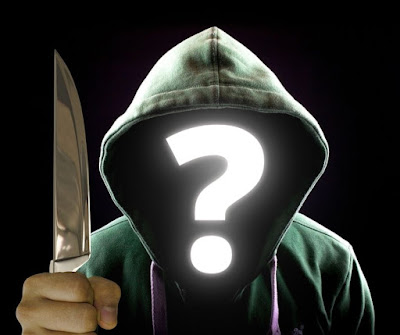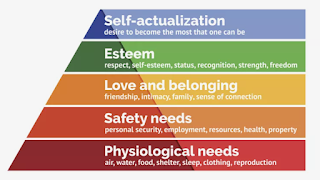Why do people carry knives?
When we talk about knives we often lean heavily on emotion and kneejerk reaction. Headline news tell us of a feral generation of lost youth that are murdering each other in numbers that are shocking. It is no wonder we are afraid and seeking answers. For martial artists, occupations that deal with aggression, and the self-protection world this could be training knife defence or learning weapons, or some hand-to-hand system that promises ways to survive any confrontation. Unfortunately, the truth is no-one system or organisation holds all the answers and the problem of knife crime and why people carry is a complex one.
I have trained and
taught in many different martial arts systems for many years, working in security
as a bouncer and bodyguard for many of those. I am a trainer and speaker on
violence management for security, corporate and schools. In my working years in
front-line roles, I have been attacked with bottles, knives, beer glasses,
scaffold poles, baseball bats and a few other things that were lying about. The
truth is I have never found any system or style that offers all the answers,
and my honest advice is avoid the situation at all costs if you are able.
However, the world is becoming increasing violent, and knives are on the rise.
The death toll is rising and with the relentless cuts to public services and
the Police we must arm ourselves with the best knowledge we can.
Statistics on knife crime.
Here are some statistics to show the current situation in
the UK with knife crime and the culture of violence. The figures are sourced
from The Office for National Statistics, The Ministry of Justice, and Governments
own websites. In the year ending March 2019 (pre-pandemic) there were around
40,100 offences involving a knife or sharp instrument in England and Wales.
This is the highest level ever recorded with the comparable data available.
Fatal stabbings were at the highest levels ever recorded
since records began in 1946 until 2020 when we saw the start of the pandemic
and countrywide lockdowns. This saw a decrease of overall knife and offensive
weapons offences of 14% in the year ending March 2021 with the CJS (Criminal
Justice Service) dealing with 18,553 cases. This drop comes after a consistent year
on year rise from 2014 leading to an overall increase of 35% up to 2020.
London ha recorded the highest rate of 168 offences involving a knife per 100,000 population in 2017/18 whereas in 2020/21 the West Midlands Police force recorded the highest rate with 156 offences per 100,000 population which is a recorded increase in the area of 41% from previous years.
The figures show a
45% increase in the number of victims aged 16-24 and a 23% increase in those
aged 25-34. Those stabbed to death are predominantly young men, as are the
perpetrators.
A third of female victims were killed by partners or ex partners, compared with 1% of male victims. Of male victims 35% were killed by a stranger, compared with 17% of female victims.
One in four men were killed by friends or acquaintances,
compared with 7% of female victims.
In the past two years
58% of suspects and 35% of victims were dealers or users of illegal drugs.
In the past two years the number of children carrying knives
in schools has risen by 50% and the number of knife offences rose by 26%.
Those most at risk
are young men aged 18-24 who come from a financially deprived area.
We should pay close
attention to these figures as they give us a very clear overview of the types
of attacks, who is most likely to become a victim, and patterns, behaviours and
places to avoid to help prevent us becoming a target.
Reasons to carry a knife.
If you ask most people who carry a knife why, they will
usually answer with it is for protection or self-defence. In fact, in an
article from the Guardian entitled In their own words; Why young men carry
knives the vast majority cited this reason stating they had either been
attacked personally or knew someone who had.
In London 95% of
those caught with a knife are male, 60% of those are under 25. However, that is
not the full story and when we start to look a little deeper, other reasons
become clearer. In a BBC article by Leslie Ashmall about youth knife crime a
young man called Orlando who is 18 and lives in London said “People where we
live, we aint got no purpose, we don’t know our worth.”
This is interesting
as it shows a very clear difference as to some of the reasons behind why people
carry knives. If we look at Maslow’s hierarchy of needs, he states there are
five main requirements. Each must be met before the next can be addressed.
These are:
Physiological needs. these are the basics of life such as
food, water, warmth, and rest.
Safety needs. things like security, stability, and freedom
from fear.
Belonging. friends,
family, partner, community, peer group
Self-esteem. Achievement, recognition, respect, credibility.
Self-actualisation. Creativity, personal talent, potential.
If the world you live in does not afford you even the basics of those needs, we can see why the next list is more relevant. Also, by understanding and acknowledging those personal reasons we can be better placed to understand the threat and make better choices regards are own personal safety.
Here is a more
in-depth list of reasons people carry knives. If you weight them up against the
hierarchy of needs, you often see a direct correlation between those needs and
the example given for carrying a knife.
Protection/self-defence
Easy to get hold of
Brought up in a household or culture where carrying is
acceptable
To gain status/kudos/street credibility/respect
Reassurance
Instil fear in others
They feel they cannot physically defend themselves
Forced to by older gang members/family members
To physically harm another
Peer pressure
Commit crime
Protect assets
This list is far from exhaustive but gives a broader
spectrum view on the motivations for having a knife. By understanding why
someone would carry we are better equipped to deal with the issue and guide our
training to include understanding the social and economic drivers creating teachable
knowledge around the types of threats faced to manage the physical, psychological,
and physiological aspects of knife crime.
Physical skills training.
It will be up to the reader to decide what if any physical
skills should be practised, and to what level to answer the perceived threat
this problem creates. The majority reading this will probably already train in
some form of martial art so my advice on the physical would be this. Make sure
your practise is more than compliant set drills. Add as much realism as you
can. Failing is part of learning. If you always succeed in your drills, you are
not adding enough realism. Add fear and aggression training. It matters. Change
location, training clothes, work with other styles, anything to break the norm.
Try unrehearsed and
unchoreographed defences with a marker pen and white t-shirt. Learn what the
different types of blades do as each is designed for its own specific role so
therefore each has different capabilities.
If you teach or train knife defence then teach awareness,
avoidance, de-escalation, and common sense first. Do not glorify violence,
especially weapons defence. Disarms and controls are a last resort, not a first
response.
In my Edged Weapons defence seminars, we cover all of this
in detail and look to our edged weapons action hierarchy to understand and
manage the levels of threat, plus principle led physical techniques used by
military, police, and security forces from around the world.
This article is based on content taken from my e-book Knife crime and edged weapons awareness.
Please contact me direct for more details.






Comments
Post a Comment